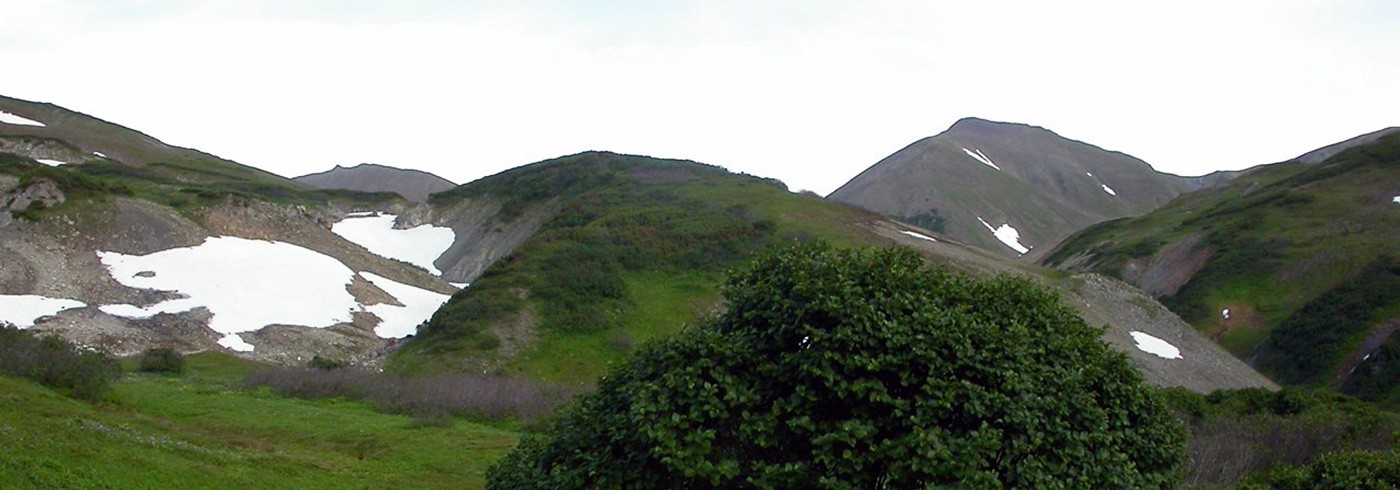Infectious agents in bird populations in the Beringia area
15 July 2005 - 20 August 2005The outbreak of influenza in Asia – along with the recent emergence of other highprofile zoonotic diseases such as West Nile virus and severe acute respiratory syndrome (SARS) – have highlighted the importance of understanding the interactions among humans, domestic animals and wildlife in the maintenance and transmission of disease. It also illustrates the need for collaboration among wildlife, agricultural and human health researchers. The participants in this project were ornithologists and also had specialisations, in medical and biological sciences, which gave the project a unique cross-disciplinary character.
The scientific focus and logistical framework for our part of the Beringia 2005 expedition were to collect faecal samples from shorebirds, ducks, geese and gulls to check for the presence of microorganisms like antibiotic resistant bacteria, Campylobacter spp., Helicobacter spp., Salmonella spp., Chlamydiophila and Avian Influenza Virus (AIV). During the last year the ongoing AIV H5N1 epizootic in Southeast Asia has expanded its host range and changed its epidemiology and epizootology. Recent reports show that H5N1 virus now infects wild sedentary and, more alarmingly, migratory birds. This is of major concern, both from a human health perspective where H5N1 possibly could start a human flu pandemic, but also from the perspective of animal health and wildlife biodiversity. The highly pathogenic H5N1 virus may pose a great threat if it is transmitted to susceptible and threatened birds and mammals. Since all AIV uses wild waterfowl as the natural reservoir, samples from ducks, geese and shorebirds from the Beringian tundra region are important epidemiological keystones in our understanding of the ecology of AIV. The tundra region of Asia, with its abundance of migratory waterfowl, has been regarded as a one of the potential foci of origin for AIV strains that later emerge in Southeast Asia. Furthermore, in theory birds that migrate from breeding grounds in Siberia to wintering areas in Europe could mix and exchange AIV with birds that have been infected in Southeast Asia, as some birds migrate to the same breeding grounds as the European birds. Thus the samples we collected are unique and highly important in an international perspective.
We participated in the Beringia 2005 expedition from July 15th to August 20th 2005. At the first site in Lorino, 115 birds of 12 species (mainly shorebirds) were sampled after capture either by funnel traps or Japanese mist nets. After getting onboard the icebreaker Oden we made two brief stops on the Siberian side, at Kolyushin Bay and Wrangel Island, where we sampled 95 birds of 11 species and 260 birds of 4 species respectively. During the rotation in Barrow, Alaska, 202 birds of 9 species were sampled. In total, 704 samples from 24 bird species were collected, of which Snow goose Anser caerulescens (222 samples), Pintail Anas acuta (135 samples), Western sandpiper Calidris mauri (83 samples) and Vega gull Larus vegae and Glaucous gulls L. hyperborus (106 samples) were the most common. Furthermore some 20 samples were collected from mammals in cooperation with Professor Anders Angerbjörn from Stockholm University. From some species which are difficult to catch – e.g. ducks and geese – samples were collected directly from the ground after flushing a roosting flock of birds. All samples for virus analyses were immediately stored in a transport medium at -70ºC. Unfortunately, we were not allowed to export any samples associated with AIV out of Russia. These samples were stored in a -70ºC freezer and lifted over by helicopter to the Russian icebreaker Academic Federov for transport to St. Petersburg where they will be analysed in collaboration with Professor Oleg Kiselev at the Influenza Institute.
As we fine tuned the logistics prior to the expedition, we worked with an unbroken cold chain and had a short transportation time from the sampling in the field to the start of the analyses in the high quality laboratory facility onboard icebreaker Oden. We could therefore obtain a high resolution in the bacterial analyses and could isolate bacteria down to the species level of Campylobacter spp., Salmonella spp. and other entheropathogenic bacteria. Even if we did not find any Salmonella spp., we isolated numerous specimens of Campylobacter jejuni, Campylobacter spp. and Escherichia coli, primarily from the gull samples.
We believe that this project can give new insight in the ecology of influenza virus, bird borne bacteria and antimicrobial resistance and will increase the knowledge for correct risk assessment and disease control measures.



